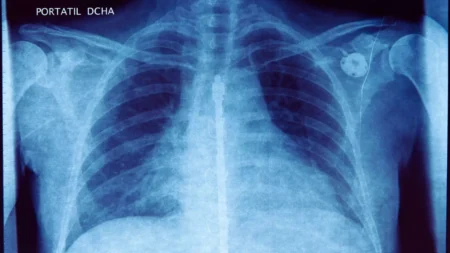A high-deductible or low-deductible health insurance plan might affect your healthcare bills and budget. This article compares high-deductible health plans (HDHPs) with low-deductible health plans (LDHPs), covering their advantages and downsides, and variables to consider while choosing a plan.
High-Deductible Health Plans (HDHPs)
What is a high-deductible health plan?
A high deductible health plan typically has a higher deductible, meaning the amount you pay out-of-pocket for covered medical expenses before your insurance starts paying, compared to a low deductible plan. For 2023, the IRS defines a high deductible health plan as any plan with a deductible of at least $1,500 for an individual or $3,000 for a family.
Pros and cons of a high-deductible health plan
Pros:
- Lower monthly premiums – HDHPs tend to have lower premiums compared to low deductible plans. This can mean significant savings, especially for those in good health who don’t expect to use many medical services.
- Eligibility for a Health Savings Account (HSA) – A key benefit of HDHPs is that they allow you to open and contribute to an HSA, which can be used to pay for qualified medical expenses tax-free. HSAs enable you to save and invest money for healthcare costs.
- Lower overall costs if you rarely need care – For those who only need preventive care and have minimal health expenses, HDHPs often provide overall cost savings because of the lower premiums.
Cons:
- You pay more out-of-pocket initially – Because of the high deductible, you pay the full costs for medical expenses until you reach your deductible. This can be difficult for those with chronic conditions or limited budgets.
- Higher cost if you need a lot of care – If you require frequent medical services and care, your costs throughout the year could be higher with an HDHP given the high deductible.
Is a high-deductible health plan right for you?
HDHPs work best for those in relatively good health who rarely need medical services beyond routine preventive care. The plans make the most financial sense if you have enough savings to comfortably pay the deductible in the event of an unexpected illness or accident. HDHPs also suit those wanting to open and utilize a Health Savings Account.
Understanding the costs and benefits of a high-deductible health plan
The primary benefits of HDHPs are lower monthly premiums and tax-advantaged HSAs. But these plans shift more healthcare costs to you until the deductible is met. Carefully estimate your expected healthcare needs and expenses. While HDHP premiums are lower, you’ll need to be prepared to pay out-of-pocket for any services up to your deductible amount. Determine whether your savings could adequately cover those expenses in the event they were needed.
Low-Deductible Health Plans (LDHPs)
What is a low-deductible health plan?
A low deductible health plan has a lower deductible amount, often $1,000 or less for an individual and $2,000 or less for a family. Some LDHPs may also have small copayments or coinsurance for certain services instead of having to meet the full deductible first.
Pros and cons of a low-deductible health plan
Pros:
- Lower out-of-pocket costs for medical expenses – With a lower deductible, you pay less out-of-pocket before insurance coverage kicks in. This can be a major benefit if you require frequent medical services and care.
- Copays for some services – LDHPs often have copays for certain services like doctor visits and prescriptions so you only pay a small fixed amount instead of the full cost until meeting the deductible.
- More comprehensive coverage – Lower deductible plans tend to have more generous coverage with lower coinsurance percentages after meeting the deductible. This can reduce your share of big medical bills.
Cons:
- Higher monthly premiums – The premiums for LDHPs are typically higher than HDHP policies. You pay this higher premium cost each month regardless of whether you use medical services.
- No HSA eligibility – You cannot open or contribute to an HSA if you have a LDHP, losing out on the tax savings and investment benefits.
- Potentially higher total costs if care isn’t needed – For those with minimal healthcare expenses, the higher premiums of LDHPs can mean higher overall yearly costs compared to HDHPs’ lower premiums.
Is a low-deductible health plan right for you?
LDHPs are a good choice if you expect to use healthcare services more frequently, have a chronic condition, take expensive prescription medications, or want lower out-of-pocket costs per medical visit. The trade-off is higher monthly premiums, so these plans work best for those willing and able to pay more for lower per-service costs.
Understanding the costs and benefits of a low-deductible health plan
While you pay more monthly for an LDHP, your individual healthcare visits and prescription fills cost you less until hitting the plan’s out-of-pocket maximum. Carefully consider your expected healthcare utilization and determine if the savings from lower per-visit costs offsets the higher premiums. Also factor in eligibility for copays versus coinsurance and the plan’s coinsurance rates.
Factors to Consider When Choosing Between High and Low Deductible Plans
When deciding between high and low deductible health plans, key factors to take into account include:
Your budget and financial situation
Consider your income, savings, and other financial obligations. How much can you comfortably afford in monthly premiums? Do you have enough savings to cover the high deductible if unexpectedly needed?
Your health needs and expected healthcare expenses
Estimate your expected healthcare utilization for the year. Do you just need routine preventive services? Or do you have medical conditions that require frequent doctor visits, tests and prescription medications?
Your risk tolerance and ability to handle unexpected medical costs
If faced with high, unexpected medical bills, could you cover the costs out-of-pocket until meeting the deductible? Or would you need the lower per-visit costs of an LDHP?
Available resources such as Health Savings Accounts (HSAs) or Flexible Spending Accounts (FSAs)
See if an HSA or FSA is an option to help offset healthcare costs in either type of plan. HSAs provide valuable savings and investment benefits but only work with HDHPs.
How to Choose the Right Plan for You?
Selecting the right deductible level involves a number of considerations:
Evaluate your healthcare needs and expenses
Do a thorough assessment. Look at your medical conditions. Estimate doctor visits, likely tests and prescription needs. Consider potential new health issues that could arise.
Consider your financial situation and budget
Look at your income, savings and other fixed and discretionary expenses. Factor in premium costs, deductibles and maximum out-of-pocket costs.
Assess your risk tolerance and ability to handle potential medical costs
Be realistic about your ability to take on the higher upfront costs of an HDHP if significant medical expenses occurred.
Review and compare different plans and their coverage options
Look beyond just deductibles. Compare total costs, coinsurance rates, copays, provider networks and prescription drug coverage.
Seek guidance from a healthcare professional or insurance advisor
Make use of experts who understand plan options and your health profile and can offer personalized advice.
Make an informed decision based on your personal circumstances
There is no “one size fits all” answer. Choose the option that best balances coverage, costs and financial risk for your situation.
With careful analysis of your healthcare needs and finances, you can determine whether a high deductible or low deductible plan is the smarter choice. Weigh the trade-offs and consult experts to select an optimal health insurance policy.




